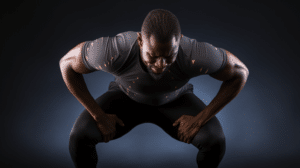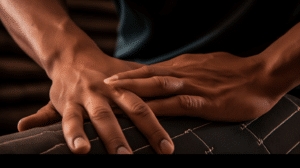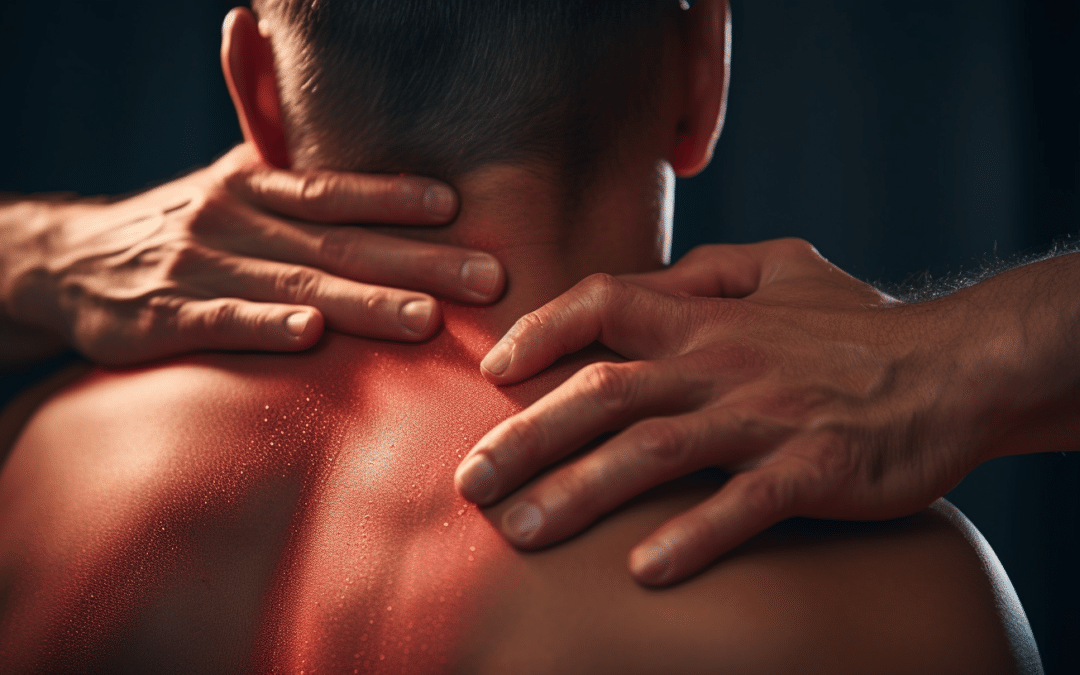Sports massage is a powerful tool for athletes to maximize physical performance, prevent injury, and aid recovery. Like an engine, athletes must tune their bodies to ensure peak performance; sports massage is the grease to keep the engine running smoothly. Athletes can unlock their full potential and stay in the game using various techniques. This article will discuss the top 10 sports massage techniques every athlete should know.
Key Takeaways
- Deep tissue massage focuses on deeper layers of muscle tissue and can improve flexibility and reduce tension.
- Trigger point therapy releases tight points in muscles, reducing pain and improving range of motion.
- Sports massage can help prevent injuries by improving flexibility and circulation and identifying potential areas of weakness.
- Post-workout massage can speed recovery, improve flexibility, and reduce muscle soreness.
Types of Sports Massage
 Sports massage is a type of massage therapy that uses specialized techniques to target areas of the body that have been overused or injured from physical activity. This type of massage is designed to help athletes prepare their bodies for optimal performance, reduce fatigue, and relieve muscle soreness. Common types of sports massage include deep tissue massage, which focuses on deeper layers of muscle tissue, and pre-event massage, which is given shortly before an event to help athletes relax and focus.
Sports massage is a type of massage therapy that uses specialized techniques to target areas of the body that have been overused or injured from physical activity. This type of massage is designed to help athletes prepare their bodies for optimal performance, reduce fatigue, and relieve muscle soreness. Common types of sports massage include deep tissue massage, which focuses on deeper layers of muscle tissue, and pre-event massage, which is given shortly before an event to help athletes relax and focus.
Sports massage is beneficial for athletes because it helps to reduce the chance of injury, improve muscle flexibility and range of motion, and enhance overall performance. It can also improve circulation, help reduce inflammation, and promote relaxation. Additionally, sports massage can help to reduce stress, improve concentration, and reduce muscle tension.
Sports massage is not just for professional athletes; it can be used by anyone participating in physical activity, from recreational athletes to weekend warriors. Not all sports massage techniques are the same, so it is essential to find a certified massage therapist knowledgeable in the specific type of massage that will best meet an individual’s needs.
Overall, sports massage is a powerful tool for athletes to maximize their performance and reduce the chance of injury. By using the appropriate techniques and learning about the different types of massage, athletes can get the most out of their massage sessions and stay at the top of their game.
Benefits of Sports Massage
Sports massage is an effective technique that can provide various physical and mental benefits, such as improved flexibility, reduced pain, and reduced stress. It is important to note that flexibility and pain reduction are two of the key benefits of sports massage; however, the psychological effects of massage, such as stress reduction, should not be overlooked. It is essential to understand the various benefits of sports massage to maximize the potential benefits of this therapy.
Improved Flexibility
Improved flexibility can be accomplished with sports massage techniques. Through regular sports massage, athletes can expect increased mobility, improved posture, increased range of motion, and reduced risk of injury.
- Sports massage encourages muscles to relax and lengthen, allowing for an increased range of motion.
- Regular sports massage helps to keep the joints lubricated and reduces the risk of injury due to overuse.
- Soft-tissue techniques help correct muscular imbalances and promote healing.
- Incorporating corrective exercises into sports massage sessions can help improve posture and enhance muscular function.
Sports massage is a great way to maintain flexibility and improve overall performance. Regular sports massage can help athletes maximize their potential and stay in peak condition.
Reduced Pain
Regular sports massage can help to reduce pain associated with athletic activities. By manipulating the soft tissue through systematic movements, this massage can improve tissue flexibility, reduce muscle tension, and reduce muscle strain. Additionally, regular massage can help to reduce the risk of injury and improve overall performance. Moreover, sports massage can help to reduce inflammation, alleviate pain, and improve the range of motion in the joint. It may even reduce the likelihood of future muscle strain or injury in some cases.
Therefore, sports massage can benefit athletes looking to reduce pain and improve their performance. With its ability to reduce pain, muscle tension, and inflammation, sports massage can be invaluable for athletes looking to stay in top condition.
Reduced Stress
Regular sports massage techniques can help reduce the stress associated with athletic activities. Stress relief is achieved by relieving muscle tension and releasing endorphins, hormones that create feelings of well-being. Long-term stress can strain the body, and massage helps reduce cortisol levels, a hormone associated with stress. Sports massage also increases blood flow and circulation and triggers the parasympathetic nervous system, which causes the body to relax.
Techniques such as Swedish massage can help to reduce stress by promoting relaxation, while trigger point therapy can break down knots of muscle tension. Other methods include deep tissue massage, petrissage, acupressure, and reflexology. Regularly using these massage techniques may help reduce stress while allowing athletes to relax and reconnect with their bodies.
Preparing for a Sports Massage
Sports massage is a therapeutic modality to help athletes heal, prevent injuries, and improve performance. When preparing for a sports massage, it is essential to understand the benefits, the different types of massage, and the best ways to prepare your body. Research has shown that massage can reduce muscle soreness, decrease stress, and improve sleep quality, all of which are important for athletes to perform at their best.
massage can reduce muscle soreness, decrease stress, and improve sleep quality, all of which are important for athletes to perform at their best.
There are many types of massage, such as Swedish massage, deep tissue massage, and trigger point therapy, all of which can be used to treat an array of athletic issues. Preparing your body for a massage can help ensure the best possible results. Drinking plenty of water and wearing comfortable clothes to the appointment is usually recommended.
Benefits of Massage
Massage therapy has been demonstrated to provide numerous benefits for athletes. It can reduce inflammation and improve performance, help with recovery after intense exercises, improve range of motion, and reduce stress. Reduced inflammation is one of the key benefits of massage therapy, as it helps to reduce the amount of pain felt by athletes due to the release of hormones such as serotonin, helping to reduce the severity of the inflammation.
Massage therapy can also improve performance, as it helps increase blood flow to the muscles and other tissues, leading to improved muscular strength, flexibility, and circulation. Massage therapy also helps to improve the range of motion by loosening tight muscles and tendons, allowing for more flexibility and a more excellent range of motion. Lastly, massage therapy can help reduce stress levels, as it helps reduce the amount of cortisol, the stress hormone, in the body.
Types of Massage
Massage is a form of manual therapy that can provide a range of benefits for athletes. Various types of massage can be used depending on the desired outcome. Acupressure massage is one type of massage that involves using pressure to specific points on the body. This massage can help reduce pain, improve circulation, and reduce stress. Reflexology massage is another type of massage that works on the principle that specific areas of the feet, hands, and ears are connected to organs and systems in the body.
This massage can help improve overall health, reduce fatigue, and promote relaxation. These massage techniques can help improve an athlete’s performance and recovery.
Preparing Body
Preparing the body before a session is essential to maximize the benefits of massage. Achieving optimal results can be accomplished by actively stretching and deep breathing exercises. Dynamic stretching will help to loosen tight muscles and increase the range of motion, while deep breathing will help to reduce tension and improve circulation. Additionally, drinking adequate amounts of water before a massage will help flush toxins from the body, reduce stiffness, and keep the muscles hydrated.
Finally, entering a massage session with a relaxed body and mind will help ensure the session is as practical as possible. By using active stretching, deep breathing, and hydration techniques, athletes can ensure their body is primed and ready for the massage session.
Techniques Used in Sports Massage
Sports massage can involve a variety of different techniques that are used to help improve an athlete’s performance. These techniques can include:
- Cross-Fiber Massage: This is a technique where the massage therapist moves a muscle in a cross-fiber direction, which helps to break down adhesions or knots in the muscle tissue.
- Deep Tissue Massage: This type of massage targets the deeper muscles using slower, more deliberate strokes that can help reduce tension and improve the flexibility of the power.
- Trigger Point Therapy: This technique is used to release tight points in the muscle, which can help reduce pain and improve the range of motion.
- Myofascial Release: This is a technique that can be used to help increase circulation and reduce muscle tension.
- Shiatsu Massage: This massage technique uses pressure points and muscle stretching to help reduce stress and increase relaxation.
Each technique can help athletes improve their performance, reduce pain, and increase their overall well-being. Sports massage therapists are trained to use these techniques to help athletes achieve their goals and perform at their best.
Sports Massage and Injury Prevention
 Sports massage is more than just a relaxing and therapeutic experience; it can also be essential to injury prevention. Sports massage can help reduce the risk of muscle strain and other common sports injuries when used as part of a comprehensive pre-game preparation routine. This type of massage focuses on improving flexibility and circulation, as well as assisting the athlete to become aware of potential areas of weakness that can leave them vulnerable to injury.
Sports massage is more than just a relaxing and therapeutic experience; it can also be essential to injury prevention. Sports massage can help reduce the risk of muscle strain and other common sports injuries when used as part of a comprehensive pre-game preparation routine. This type of massage focuses on improving flexibility and circulation, as well as assisting the athlete to become aware of potential areas of weakness that can leave them vulnerable to injury.
In addition, sports massage can complement injury rehabilitation by helping speed up the healing process. Through compression, stretching, and friction techniques, sports massage can help reduce swelling, increase the range of motion, and improve the athlete’s overall health. By incorporating sports massage into a comprehensive pre-game preparation and injury rehabilitation plan, athletes can remain at peak performance while minimizing their risk of injury.
Targeted Sports Massage
Sports Massage is a specialized type of massage geared towards athletes and active individuals that can provide numerous benefits. There are various kinds of Sports Massage, including pre-event massage, post-event massage, and maintenance massage, each of which employs several specific techniques. Pre-event massage is designed to improve performance and reduce the risk of injury, while post-event massage focuses on aiding recovery and reducing muscle soreness.
Maintenance massage reduces the risk of injury and supports the body’s natural healing process. Each type of Sports Massage can also use techniques such as deep tissue massage, myofascial release, stretching, and trigger point work to help improve athletic performance.
Benefits of Sports Massage
The benefits of sports massage can include improved circulation, enhanced muscle recovery, flexibility, and reduced stress levels. Such massage techniques can help athletes stretch and apply pressure to specific areas of their body, allowing muscles to repair and relax. Improved circulation allows more oxygen and nutrients to be delivered to the muscles, speeding up recovery. Enhanced muscle repair can improve flexibility and reduce muscle soreness, allowing athletes to perform better and remain injury-free.
Reduced stress levels can help athletes focus and relax during training and competitions. By incorporating stretching techniques and muscle repair, sports massage can be valuable to any athlete’s training and performance.
Types of Sports Massage
Sports massage benefits athletes by enhancing performance, preventing injury, and reducing pain and discomfort. By utilizing different massage techniques, athletes can target specific areas to obtain the most benefit. Two popular types of sports massage are Active Release Techniques (ART) and muscle stimulation. ART is a form of manual therapy that involves the application of pressure and movement to muscles, tendons, and ligaments. This type of massage helps to reduce tightness, improve range of motion, and relax muscles.
Muscle stimulation involves electrical stimulation to cause muscle contraction and is used to reduce pain and improve muscle performance. Both types of massage benefit athletes, as they can help reduce muscle fatigue, improve circulation, and increase flexibility. With proper execution, sports massage can help athletes perform at their peak and stay injury-free.
Techniques for Sports Massage
It is essential to be aware of the various techniques available for sports massage to optimize the benefits for athletes. Cross-fiber friction is a massage technique where the therapist applies pressure perpendicular to the muscle fibers. This technique often treats muscle spasms or breaks up scar tissue. Swedish massage is another common technique used for sports massage. This massage uses five main strokes to help relax muscles and improve circulation. It reduces stress and muscle tension and improves range of motion and flexibility.
Other techniques, such as deep tissue and trigger point therapy, can also be used to help athletes achieve their goals and perform their best. When combined with stretching, sports massage can effectively improve performance and reduce the risk of injury.
Trigger Point Therapy
Trigger point therapy is a massage technique frequently used by athletes to address muscle pain and soreness issues. This form of therapy involves the application of pressure to specific points in the body, known as ‘trigger points,’ which activate the release of muscle tension and increase the flow of oxygenated blood. Trigger point therapy is an excellent way for athletes to maintain and improve their physical performance, prevent injury, and enhance their overall well-being.
Benefits of trigger point therapy include: – Improved flexibility and range of motion – Increased circulation and oxygenation of muscles – Reduced fatigue and tension – Enhanced recovery after intense physical activity – Improved performance in cross-training and injury prevention.
Trigger point therapy is a highly effective massage technique for athletes. It helps reduce muscle tension, improve flexibility and range of motion, and prevent injury. By incorporating trigger point therapy into their routine, athletes can experience improved performance and enhanced well-being.
Myofascial Release
Myofascial release is a massage therapy that focuses on releasing the tension in the body’s fascia, a connective tissue surrounding the muscles. This technique benefits athletes, as it helps reduce pain, improve range of motion, and improve performance. Myofascial release works by stretching and massaging the fascia, allowing it to regain its original length and elasticity. This helps to improve blood circulation and promote healing.
and massaging the fascia, allowing it to regain its original length and elasticity. This helps to improve blood circulation and promote healing.
Additionally, myofascial release helps to prevent injuries by promoting flexibility and improving the alignment of the body’s joints.
Athletes should utilize stretching techniques such as foam rolling, self-massage, and stretching bands to help release myofascial. These techniques involve applying pressure to the fascia for several seconds to help loosen tight muscles. Additionally, athletes should combine myofascial release with other massage techniques such as Swedish massage, deep tissue massage, and trigger point therapy to maximize the benefits and prevent injuries.
Myofascial release is an essential part of an athlete’s massage therapy routine. It can help to reduce pain, improve range of motion, and improve performance. Furthermore, it helps to prevent injuries by promoting flexibility and improving the alignment of the body’s joints, making myofascial release a valuable tool for any athlete looking to stay healthy and perform at their peak.
Post-workout Massage
A post-workout massage is a beneficial form of massage therapy that can help athletes improve their performance and reduce the risk of injury. It speeds up recovery after an intense workout by facilitating blood flow and muscle nutrients. This massage technique focuses on the muscles, joints, and connective tissue to help them relax and release tension. It also helps improve flexibility and range of motion by stretching the muscles. Additionally, post-workout massage can help athletes monitor their pace and intensity during a workout and reduce muscle soreness.
A post-workout massage usually begins with the therapist assessing the athlete’s body to identify areas that require special attention. Gentle massage strokes are then used to increase circulation and reduce tension. Muscle stretching and kneading are also used to loosen tight spaces. The therapist will typically use light pressure and short strokes to help relax the muscles. The massage session usually lasts about 30 minutes and may include the use of essential oils or heat to help increase the effectiveness of the massage.
Post-workout massage is an excellent way for athletes to enhance their performance and reduce the risk of injury. It can also help them monitor their pace and intensity during a workout and reduce muscle soreness. This massage therapy can help athletes recover faster and improve their overall performance.
Recovery and Maintenance Massage
 Recovery and maintenance massage is a massage therapy that can help athletes maintain their performance and prevent injuries. It can improve physical recovery, reduce fatigue, and promote relaxation, essential for athletes to perform at their best. Recovery and maintenance massage helps improve circulation, reduce inflammation, and release any built-up tension in the body.
Recovery and maintenance massage is a massage therapy that can help athletes maintain their performance and prevent injuries. It can improve physical recovery, reduce fatigue, and promote relaxation, essential for athletes to perform at their best. Recovery and maintenance massage helps improve circulation, reduce inflammation, and release any built-up tension in the body.
This type of massage benefits athletes who push their bodies to the limit and must maintain top performance. It can also help alleviate any pain or discomfort from rigorous training and competition.
Recovery and maintenance massage can help improve an athlete’s performance and physical recovery. This type of massage can help increase the range of motion and flexibility through stretching, kneading, and applying pressure. It can also help with muscle recovery after a strenuous workout, allowing athletes to perform at their peak for extended periods. Additionally, it can help reduce muscle soreness, improve circulation, and reduce fatigue.
Recovery and maintenance massage is integral to any athlete’s training and should be incorporated into their routine to ensure optimal performance. It can help athletes stay in top shape and prevent injuries, allowing them to perform at their best and reach their peak performance.
Frequently Asked Questions
How Long Should I Wait Before Getting a Sports Massage?
When considering getting a sports massage, it is essential to consider the potential benefits versus risks. Because of the dangers of tissue and ligament damage, one should always wait until symptoms of pain and soreness become unbearable before getting a massage. It is essential to consult with a medical professional to determine the best course of action, as a sports massage can provide relief of symptoms.
Still, it can also do further damage if done improperly. When the time is right, a sports massage can relieve symptoms and improve mobility, allowing athletes to perform better and reach their fullest potential.
What Should I Wear to a Sports Massage Appointment?
When getting a sports massage appointment, it’s essential to wear clothes that will allow you to get the most out of your session. Not only should you wear something comfortable and not too constrictive, but you should also wear something that will let the massage therapist access the areas they need to work on. During a sports massage, stretching benefits and heat therapy are often used, so it’s best to wear something that will give them access to your arms and legs and allow for a more excellent range of movement. Ultimately, wearing something that will give you the most out of your sports massage session is essential.
How Much Does a Sports Massage Cost?
The cost of a sports massage can vary greatly depending on the practitioner, the location, and the type of massage. Generally, a 60-minute session can range from $50 to $150. Prices may be higher if the massage therapist gives specialized techniques such as improving flexibility or relieving muscle strain. Additionally, it is essential to remember that some insurance plans may offer coverage for sports massage services. So, I’d like to check with your provider to confirm any necessary coverage.
Are There Any Side Effects of Sports Massage?
Irony aside, sports massage can have both positive and negative effects. While the stretching benefits and relief of muscle aches can be immense, it can also lead to soreness, bruising, and even more severe issues if not performed correctly. When done by a trained masseuse, these issues can be avoided. However, it is essential to be aware of the risks. Before receiving a massage, athletes should always consult with a physician to ensure that they are healthy enough for the massage and to discuss any possible side effects that they might experience.
Does Insurance Cover Sports Massage?
Insurance coverage for sports massage can vary depending on the policy and the provider. Generally speaking, coverage for massage therapy performed by a qualified therapist for medical reasons is recommended. Stretching benefits are typically included in this coverage, as it is usually seen as an important part of therapy and rehabilitation. It is essential to ensure that a therapist is qualified in sports massage, as it requires special knowledge and techniques to be effective. An athlete should always confirm that their insurance plan covers sports massage before booking an appointment.
Conclusion
Sports massage is an invaluable tool for athletes of all levels to increase performance, reduce injury risk, and promote optimal recovery. Combining trigger point therapy, myofascial release, and post-workout massage techniques, athletes can reap the benefits of improved flexibility, increased muscle strength, and reduced muscle soreness. With regular massage, athletes can stay in peak physical condition, allowing them to reach new heights of success in their chosen sports. Like a finely tuned engine, athletes must be well-maintained to achieve peak performance; sports massage provides the lubrication to keep them running at peak efficiency.

